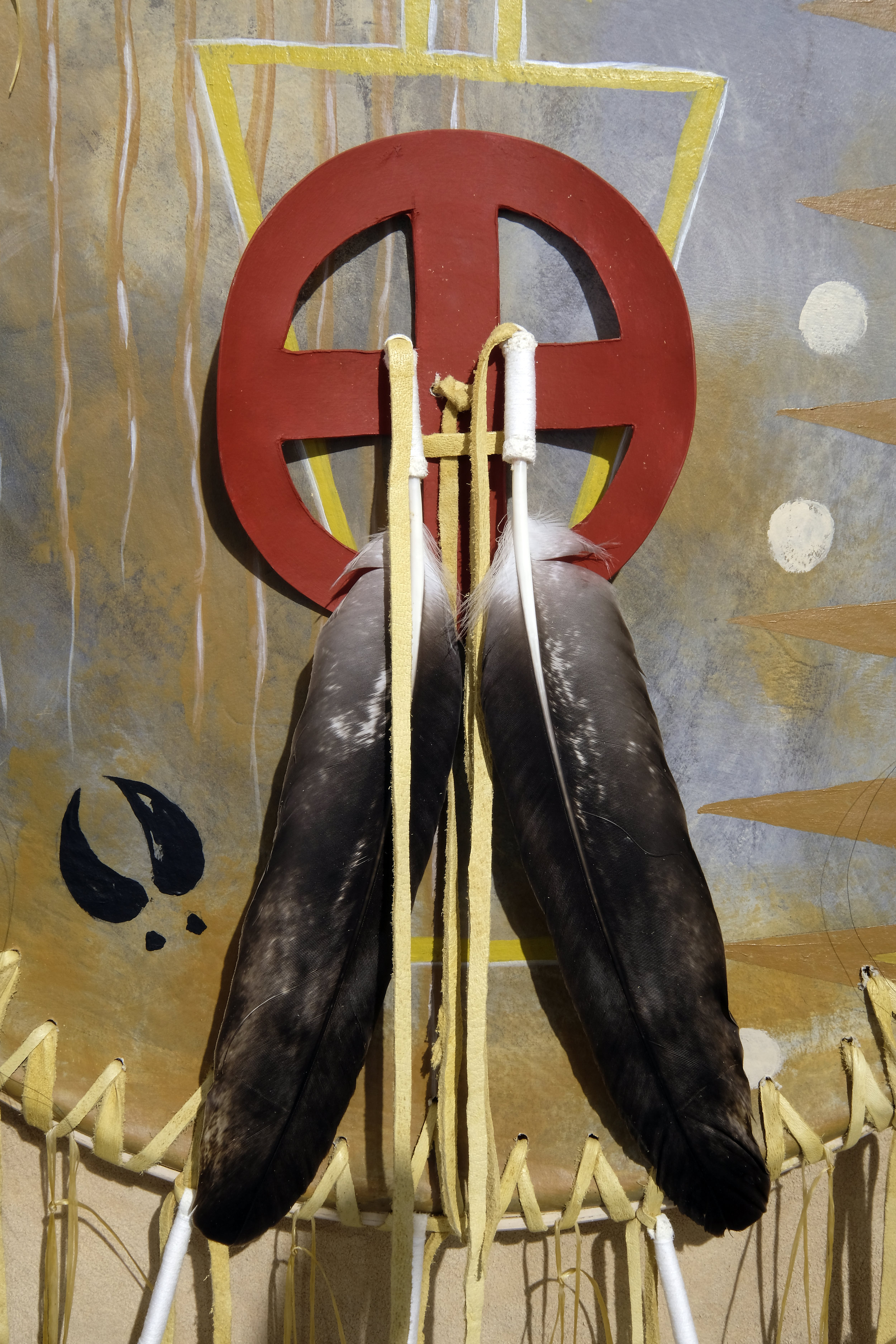Keith Bird, The Altar 2, 2016, Oil on canvas. Photo credit: Wendy Peart.
In his recent paintings, Saulteaux and Cree artist Keith Bird honours Indigenous leaders and warriors of past and present, recognizing historical leaders such as Crazy Horse, Pound Maker, Geronimo, Chief Piapot and many others. Through Spiritual Veterans, Bird sheds light on the spirituality, strength and resilience of Indigenous veterans who have fought and continue to fight to protect land, culture and human dignity.
Keith Bird was raised on Gordon First Nation in Saskatchewan. He received a BFA from the University of Regina in 2008, followed by an MFA in 2013. His work is both privately and publicly collected.
The artist would like to thank the Saskatchewan Arts Board for the generous support of this project.
Artist ↑
A Conversation with Keith Bird ↑
WP: You turned to an artmaking practice later in life after a full career as an iron worker. What led you to an artistic practice?
KB: I dabbled in art all through my life. When I was working as an iron worker, I was also raising a family. When they all grew up and left, I got my education and pursued the arts for my own satisfaction.
I got into my culture about 25-30 years ago and that’s when my art changed to an Aboriginal perspective. Before that I was doing sculpture, drawing, painting, trying to get some focus on something, but I gave it all away as gifts until I started making work in a more informative and traditional way.
WP: Growing up on Gordon First Nation in Saskatchewan when practicing traditional Cree and Saulteaux cultures was banned by the Canadian government, you had to later seek out your traditional knowledge and spiritual connections. How did you do this and who played important roles?
KB: There were quite a few elders that I spoke to and family members that stayed close to the traditions. When I left the reservation at 14, I hadn’t been exposed to Indigenous tradition until I returned home and actively sought out elders, such as Herb Walker. A lot of them came from the residential school era and didn’t want to talk about traditions because of what they went through in those institutions. So it was difficult to get some of the information and to be trusted enough to tell me about these things.
WP: Your most recent body of work, Spiritual Veterans, focuses on Indigenous warriors. Having family members who fought in wars or are active in the military, it is understandably a resonating topic for you. Can you elaborate on some ceremonies or traditions surrounding war that are reflected in your work?
KB: Ceremonies are done on a personal basis and they always honour veterans and those who choose to protect our people and others, so they are always on the forefront at a ceremony, such as Sundance. Even before anyone enters the lodge the veterans are recognized, and they are recognized throughout the days of the ceremony. My installation honours where the Sundances originated, who was doing it and the warriors who were there, like Crazy Horse and Big Bear. They were thought to be renegades but to the Aboriginal people they are our veterans. We also consider those who went to WWI, WWII, Korea, Vietnam, the Gulf Wars and Wounded Knee as veterans, and I choose to honour them.
WP: How are the spiritual elements contained in ceremonies regarding war still relevant to you beyond the context of conflict?
KB: It becomes relevant because some of our people still need protection whether its mental or physical or just to be protected from institutions that are practicing or using our people for financial means. The shields and the buffalo hides are protection. The symbolism in these pieces represents the full protection of the Anishinaabe people, traditional people and Indigenous people.
Installation Images ↑
Photos: Don Hall












